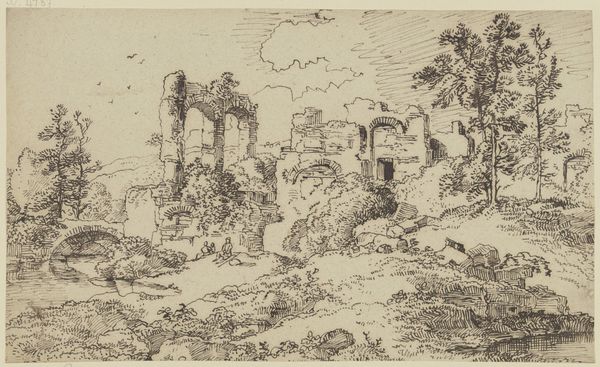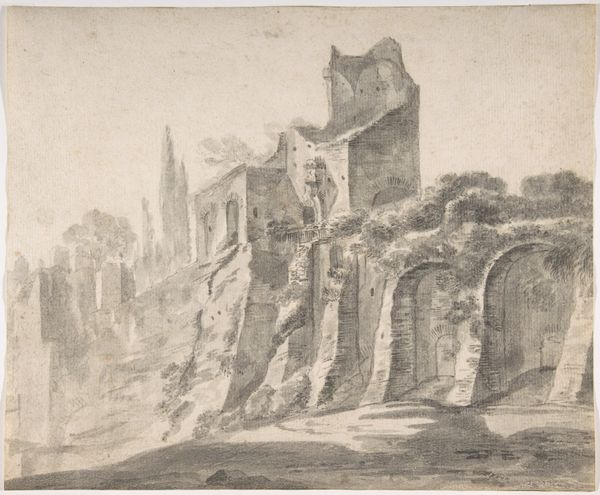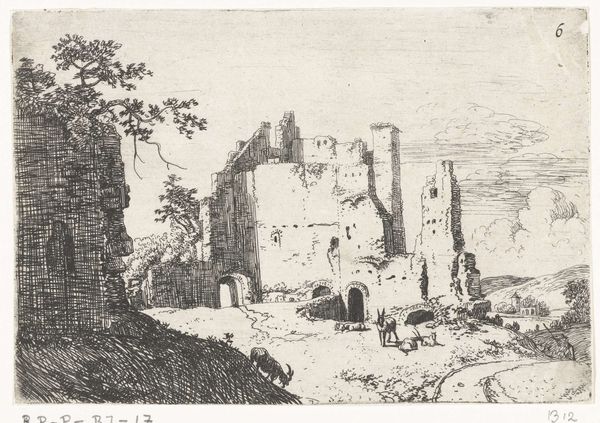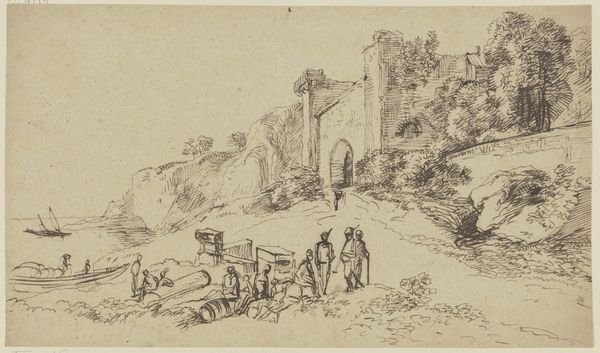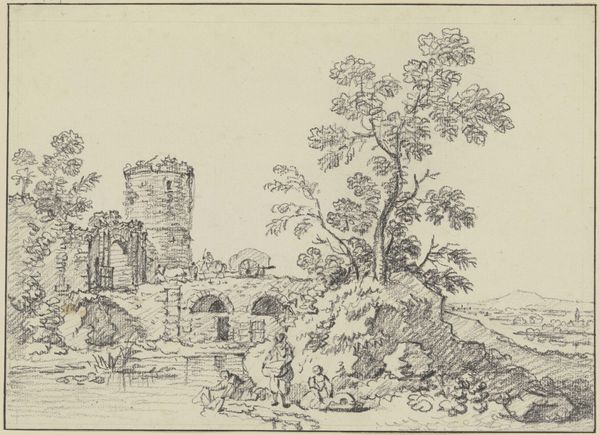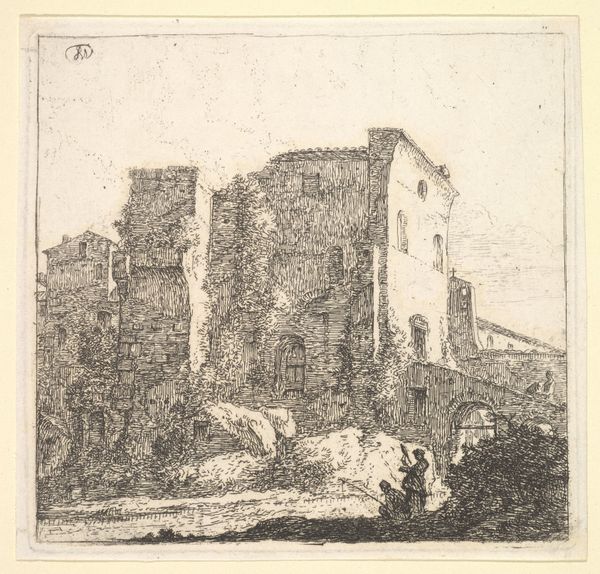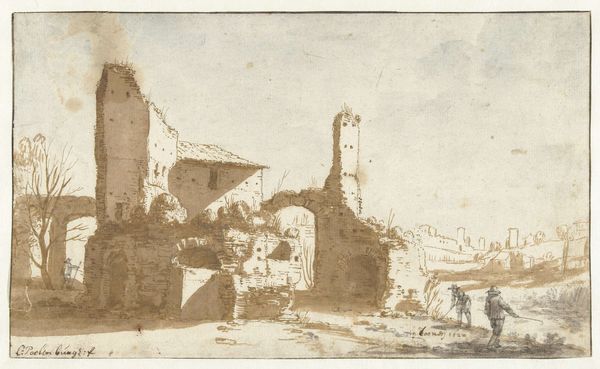
drawing, ink, pen, frottage, architecture
#
drawing
#
ink drawing
#
pen drawing
#
landscape
#
ink
#
romanticism
#
15_18th-century
#
pen
#
frottage
#
architecture
Copyright: Public Domain
Editor: We are looking at Franz Kobell’s “Burg- oder Kirchenruine in einer Landschaft,” or “Castle or Church Ruins in a Landscape,” a pen and ink drawing from the Städel Museum collection. The intricacy of the linework really strikes me; the scene is decaying and overgrown, yet it feels strangely peaceful. What stands out to you in terms of visual elements? Curator: Formally, I am drawn to the contrasts present within the work. Consider the dichotomy between the rigid architectural forms and the organic, almost chaotic rendering of the surrounding foliage. Note the artist’s use of hatching and cross-hatching to create a sense of depth and texture. Where do you see points of repetition or mirroring of form? Editor: Well, the archways in the ruins are echoed in the distant, intact structure on the right, but one is crumbling and overgrown, while the other seems… deliberate. Curator: Precisely. The strategic use of negative space also plays a vital role. It highlights the ruin, acting almost as a character against the light wash of the paper, a powerful compositional choice, wouldn’t you agree? Editor: I do, and noticing the negative space gives more form to the architecture. Before, my eye was caught by the details of the overgrowth and it seemed like just a picturesque ruin, but focusing on the bare paper helps reveal its underlying architectural structure. Thank you. Curator: And what new awareness have you developed by closely considering these structural elements within their landscape context? Editor: The focus on contrasts gives me a new appreciation of how ruin and nature enhance each other.
Comments
No comments
Be the first to comment and join the conversation on the ultimate creative platform.
